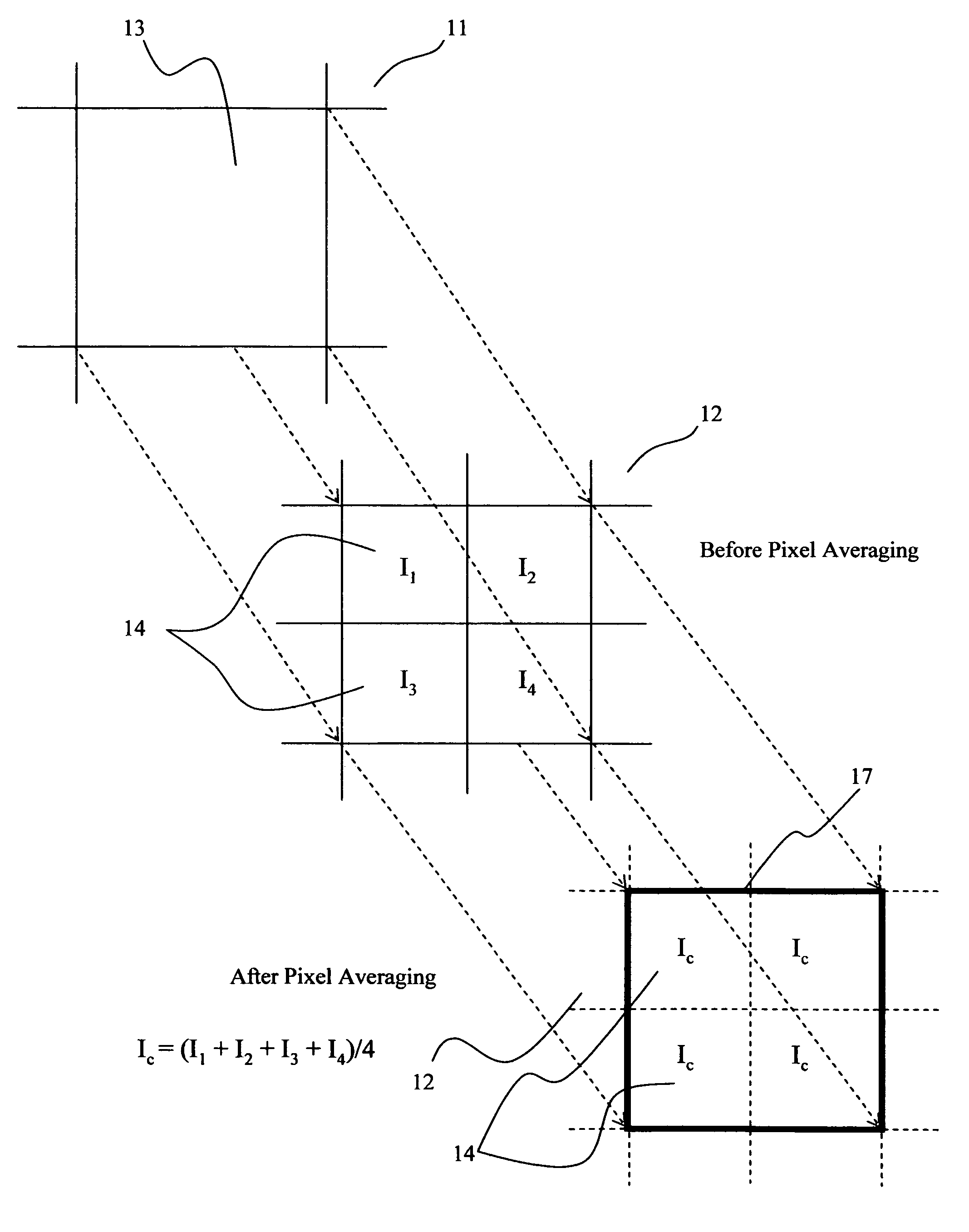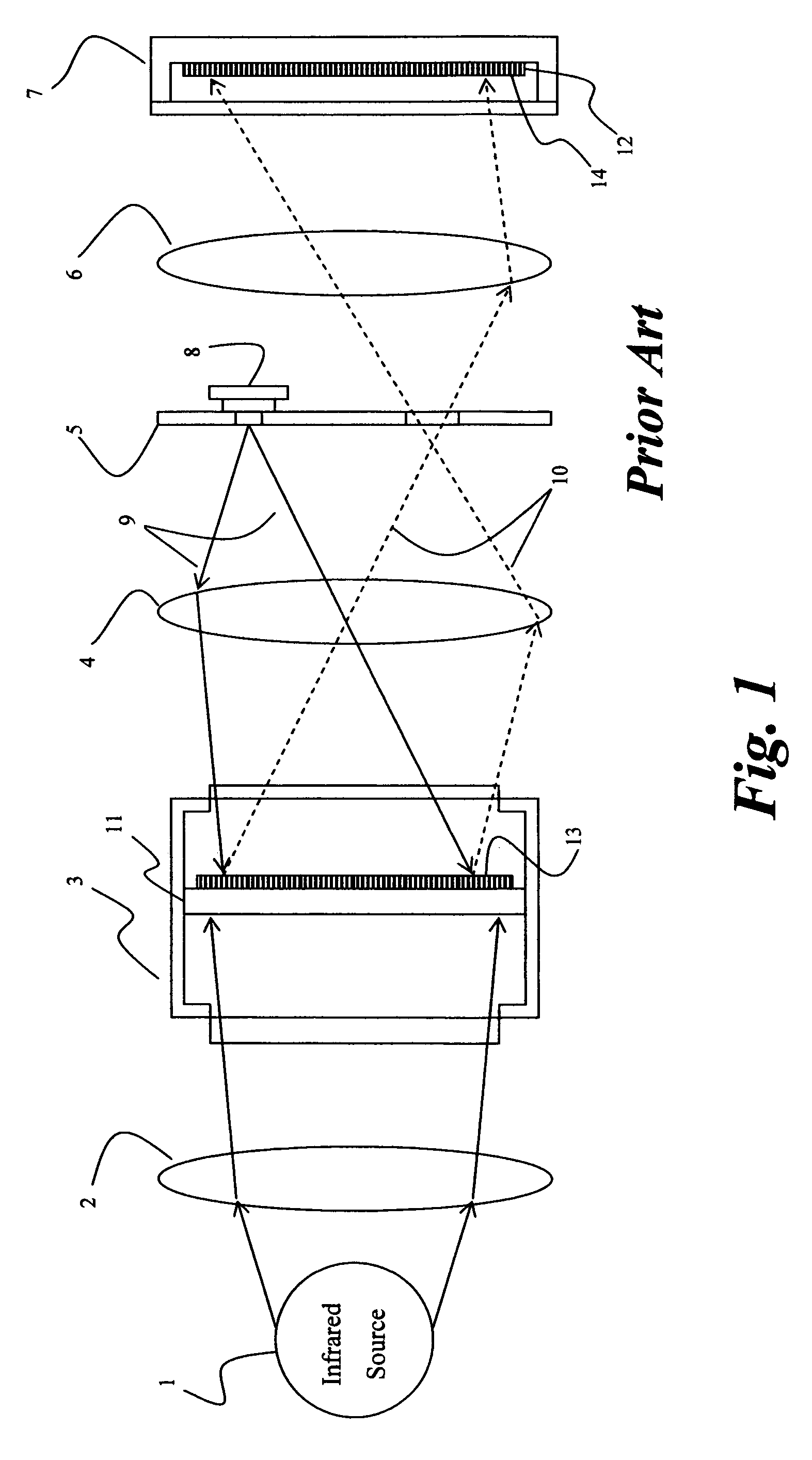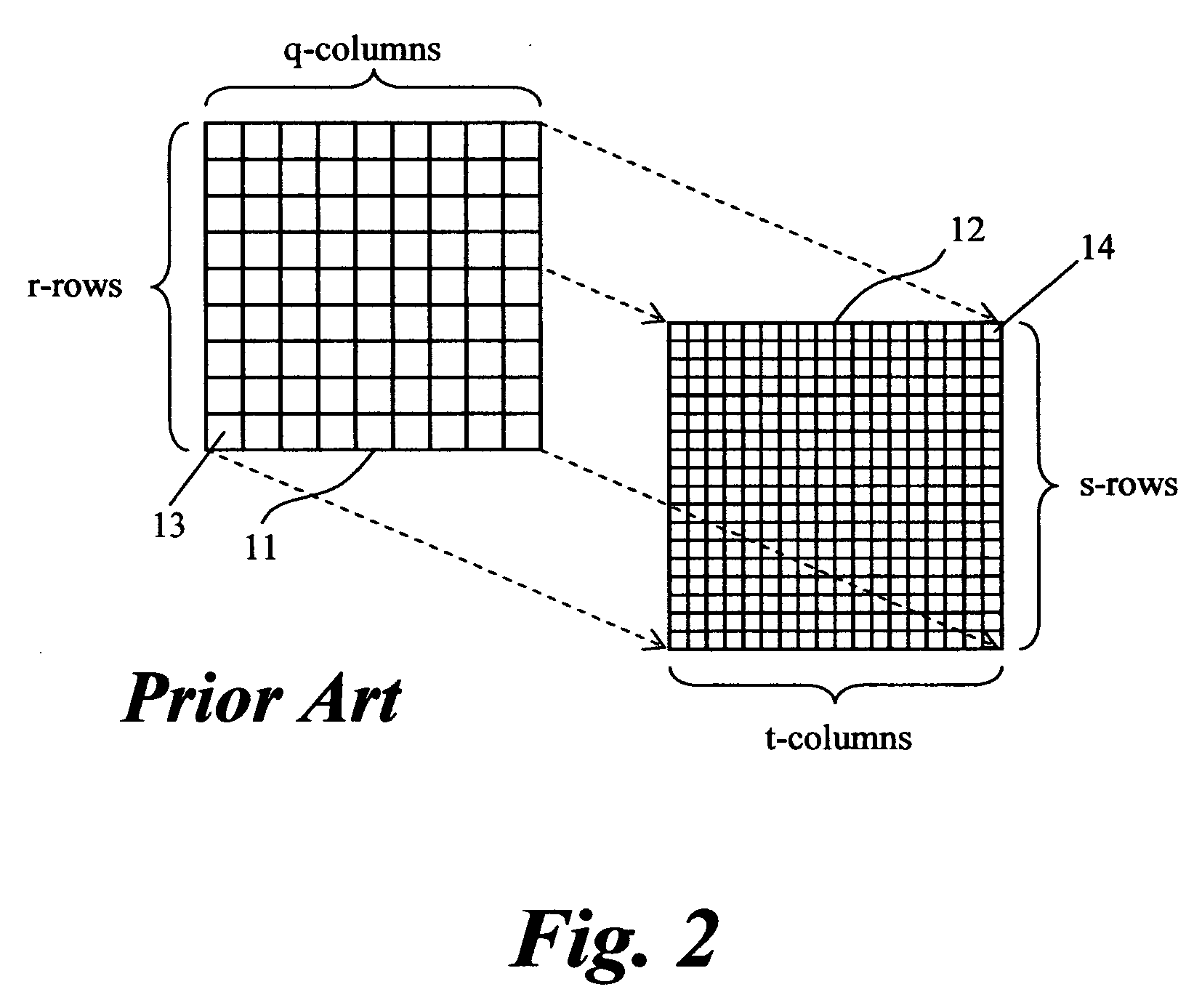Noise reduction method for imaging devices
a technology of imaging device and noise reduction, which is applied in the direction of optical radiation measurement, color signal processing circuit, instruments, etc., can solve the problems of increasing power requirements and bulk of the camera system, affecting the resolution and quality of images, and affecting the resolution of images, etc., to achieve the effect of reducing the noise equivalent temperature difference (netd) and reducing the noise equivalent temperature differen
- Summary
- Abstract
- Description
- Claims
- Application Information
AI Technical Summary
Benefits of technology
Problems solved by technology
Method used
Image
Examples
example calculations
[0066]Below are exemplary calculations of the noise equivalent temperature difference (NETD) for an arbitrary imaging device wherein the infrared focal plane array 11 is assumed to have an array size of 160×120 micro-cantilever pixels 13 and the imager 7 is assumed to have an array size of 640×480 receptor pixels 14 (representative of VGA resolution), a well capacity of 20,000 electrons (n=20,000), and a frame rate of 90 fps. The IR responsivity of the system is assumed to be R=3.5% / K. As such, the system has a horizontal pixel ratio equal to 4, a vertical pixel ratio equal to 4, and a total pixel ratio of 16-to-1.
[0067]The shot noise limited NETD of the system without the present method is
NETD=1ℜn=20.03520,000=202mK
based upon the parameters defined above.
[0068]The shot noise limited NETD of the system with the present method is
NETD=1ℜmn=10.03516·20,000=50.5mK
after summation, averaging, and assignment of the intensities for the 16 receptor pixels 14 (m=16) comprising each 4-by-4 com...
PUM
 Login to View More
Login to View More Abstract
Description
Claims
Application Information
 Login to View More
Login to View More - R&D
- Intellectual Property
- Life Sciences
- Materials
- Tech Scout
- Unparalleled Data Quality
- Higher Quality Content
- 60% Fewer Hallucinations
Browse by: Latest US Patents, China's latest patents, Technical Efficacy Thesaurus, Application Domain, Technology Topic, Popular Technical Reports.
© 2025 PatSnap. All rights reserved.Legal|Privacy policy|Modern Slavery Act Transparency Statement|Sitemap|About US| Contact US: help@patsnap.com



